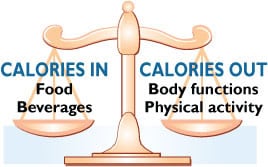What is Calorie Expenditure Running?
Calorie expenditure running refers to the amount of energy, measured in calories, that a person uses up while engaging in running activities. Understanding this concept is crucial for those aiming to manage their weight, improve fitness levels, or monitor overall energy expenditure. Running is an effective way to increase metabolism, as it continues to burn calories even after the workout has ended, contributing to a calorie deficit when combined with a balanced diet.
Factors Influencing Calorie Expenditure While Running
Calorie expenditure running is influenced by several factors, including body weight, running speed, terrain, and incline. A heavier individual typically burns more calories than a lighter one, as more energy is required to move a larger body mass. Running speed also plays a significant role, with faster running resulting in higher calorie burn.
Terrain and incline are additional factors to consider when estimating calorie expenditure. Running on softer surfaces, such as trails or grass, may burn fewer calories than running on harder surfaces, like concrete or asphalt, due to the reduced impact and energy absorption by the softer terrain. Running uphill increases calorie burn, as more energy is needed to propel the body upward against gravity. Conversely, running downhill can result in lower calorie expenditure, as gravity assists in the movement.
It is essential to consider these factors when estimating calorie burn during running, as neglecting them may lead to inaccurate calculations. Utilizing tools such as running watches or online calculators that account for these variables can provide a more precise estimation of calorie expenditure running.
How to Calculate Calorie Expenditure Running
Calculating calorie expenditure running can be accomplished through various methods, each with its advantages and limitations. Utilizing a heart rate monitor, a running watch, or online calculators are common approaches.
Heart rate monitors measure the intensity of a workout by tracking heart rate during exercise. By inputting age, weight, and gender, heart rate monitor devices can estimate calorie burn during a running session. This method offers the advantage of real-time tracking and adjustment, allowing runners to monitor their calorie expenditure as they progress. However, heart rate monitors may not always provide accurate calorie burn estimations, as factors such as hydration levels, stress, and fatigue can impact heart rate.
Running watches, often equipped with GPS technology, can also estimate calorie expenditure by tracking distance, pace, and duration. These devices can offer more precise estimations than heart rate monitors, as they account for factors such as terrain and incline. However, running watches may still have limitations, as they rely on algorithms and estimations to calculate calorie burn.
Online calculators, which consider factors such as body weight, running distance, and duration, can provide an estimation of calorie expenditure running. These calculators offer the advantage of convenience, as they do not require additional equipment. However, they may not account for individual variations in fitness levels, running efficiency, or other factors that can impact calorie burn.
In summary, each method for calculating calorie expenditure running has its strengths and weaknesses. Utilizing a combination of approaches, such as a heart rate monitor and running watch, or tracking progress through online calculators and manually adjusting estimations, can offer a more accurate and comprehensive understanding of calorie burn during running workouts.
Maximizing Calorie Expenditure Running: Tips and Tricks
To maximize calorie expenditure running, incorporating interval training, hill repeats, and varying pace into workouts can be highly effective. These strategies not only increase calorie burn during runs but also contribute to overall fitness and running efficiency.
Interval training involves alternating between high-intensity and low-intensity periods during a run. For example, a runner might alternate between sprinting for 30 seconds and jogging for 1-2 minutes, repeating this pattern for the duration of the workout. This approach challenges the body, increasing calorie burn and improving cardiovascular fitness.
Hill repeats, or running uphill at a challenging pace followed by jogging or walking back down as recovery, can significantly boost calorie expenditure. Uphill running requires more effort and engages different muscle groups, leading to increased calorie burn. Additionally, hill repeats can improve running form, power, and speed.
Varying pace during runs can also contribute to higher calorie burn. Incorporating periods of faster running, such as tempo runs or fartleks, can challenge the body and increase overall calorie expenditure. Varying pace also helps prevent boredom and plateaus in running performance.
Consistency and progressive overload are essential components of maximizing calorie expenditure running. Regularly scheduled runs, gradually increasing distance, intensity, or frequency, can help ensure continuous progress and improvement. By consistently challenging the body and incorporating various training methods, runners can effectively maximize calorie expenditure and overall fitness.
Comparing Calorie Expenditure Running to Other Activities
While running is an effective way to burn calories, it is essential to understand how it compares to other forms of exercise. Swimming, cycling, and weightlifting are popular alternatives, each with unique benefits and calorie expenditure profiles.
Swimming, a low-impact, full-body workout, can burn a significant number of calories, depending on the intensity and duration of the session. For example, a vigorous swimming workout can burn up to 500-700 calories per hour, comparable to calorie expenditure running. However, swimming may not be as accessible as running for some individuals, as it requires a pool or body of water and specific equipment.
Cycling, whether outdoor or indoor, offers a versatile exercise option that can burn between 400-1000 calories per hour, depending on intensity and resistance. Like swimming, cycling engages multiple muscle groups and can be a lower-impact alternative to running. However, cycling may not provide the same cardiovascular benefits as running, as it is a non-weight-bearing activity.
Weightlifting, or resistance training, is an essential component of a well-rounded exercise routine, focusing on building strength and muscle mass. While weightlifting may not burn as many calories as running during the workout itself, it can contribute to increased calorie expenditure in the long term. Muscle tissue requires more energy to maintain than fat tissue, leading to a higher metabolic rate and increased calorie burn even at rest.
Running remains a highly accessible and effective form of exercise for calorie expenditure, with the advantage of requiring minimal equipment and being easily adaptable to various environments and intensities. However, incorporating a variety of exercise forms into a workout routine can provide a comprehensive approach to overall fitness and weight management.
Misconceptions and Myths About Calorie Expenditure Running
Numerous misconceptions and myths surround calorie expenditure running, which can lead to misunderstandings and misguided strategies. Addressing these misconceptions is crucial for developing an effective and sustainable running routine.
Myth 1: Running on an empty stomach burns more calories. While running on an empty stomach may lead to a slight increase in fat burning, it can also result in decreased performance and increased muscle breakdown. Adequate pre-run nutrition is essential for maintaining energy levels and supporting overall running goals.
Myth 2: Running longer distances is always better for weight loss. Although longer runs can contribute to higher overall calorie expenditure, they may not always be the most effective or sustainable approach to weight management. Incorporating a variety of run distances, intensities, and cross-training activities can provide a more balanced and comprehensive exercise routine.
Myth 3: Running is the only way to lose weight. While running can be an excellent tool for weight management, it is not the only option. A well-rounded exercise routine, combining cardiovascular activities, strength training, and flexibility work, can offer a more holistic approach to weight loss and overall fitness.
Myth 4: The more you run, the better the results. Overtraining and excessive running can lead to injuries, burnout, and decreased performance. Prioritizing rest, recovery, and cross-training is essential for maintaining long-term running success and overall health.
Maintaining a Balanced Diet for Optimal Calorie Expenditure Running
Proper nutrition plays a critical role in supporting calorie expenditure running, enhancing performance, and aiding in recovery. A balanced diet, rich in protein, carbohydrates, and healthy fats, is essential for fueling runs and promoting overall health and well-being.
Protein is vital for muscle repair and growth, making it an essential nutrient for runners. Consuming adequate protein, both before and after runs, can help promote muscle recovery and reduce muscle soreness. Incorporating protein-rich foods, such as lean meats, fish, eggs, dairy products, legumes, and nuts, into the diet can ensure runners meet their protein needs.
Carbohydrates serve as the primary energy source for running, with the body converting carbohydrates into glucose for immediate use or glycogen storage in the muscles and liver for later use. Consuming a balanced mix of complex carbohydrates, such as whole grains, fruits, and vegetables, can provide sustained energy throughout runs while also contributing to overall health.
Healthy fats, found in foods like avocados, nuts, seeds, and fatty fish, play a crucial role in supporting various bodily functions, including hormone production, nutrient absorption, and inflammation reduction. Incorporating healthy fats into the diet can help promote overall health and well-being for runners, as well as aid in recovery and performance.
Long-Term Strategies for Sustainable Calorie Expenditure Running
Establishing sustainable calorie expenditure running habits is crucial for long-term success and overall health and well-being. Implementing the following strategies can help runners maintain a balanced and effective running routine.
Set Realistic Goals: Establishing clear, attainable goals can help runners stay motivated and focused on their progress. Setting SMART (Specific, Measurable, Achievable, Relevant, Time-bound) goals can provide structure and guidance for runners, ensuring they remain on track and committed to their running journey.
Track Progress: Regularly monitoring and tracking progress can help runners identify areas for improvement, celebrate achievements, and maintain motivation. Utilizing running apps, fitness trackers, or manually recording running data can provide valuable insights into running performance and calorie expenditure.
Cross-Train: Incorporating various forms of exercise into a workout routine can help prevent overtraining, reduce the risk of injury, and promote overall fitness. Cross-training activities, such as swimming, cycling, or strength training, can complement running workouts and contribute to sustainable calorie expenditure habits.
Prioritize Rest and Recovery: Adequate rest and recovery are essential components of a sustainable running routine. Ensuring proper sleep, incorporating rest days, and engaging in activities that promote relaxation and stress reduction can help runners maintain long-term running success and overall well-being.







